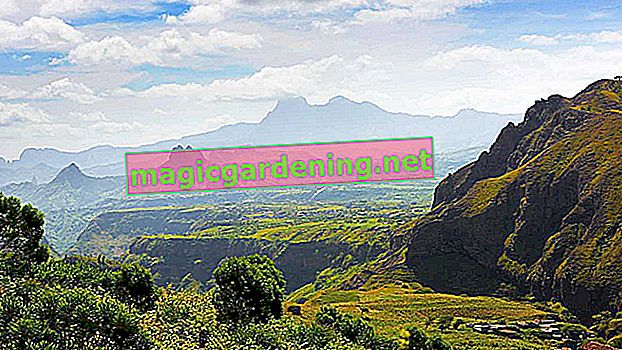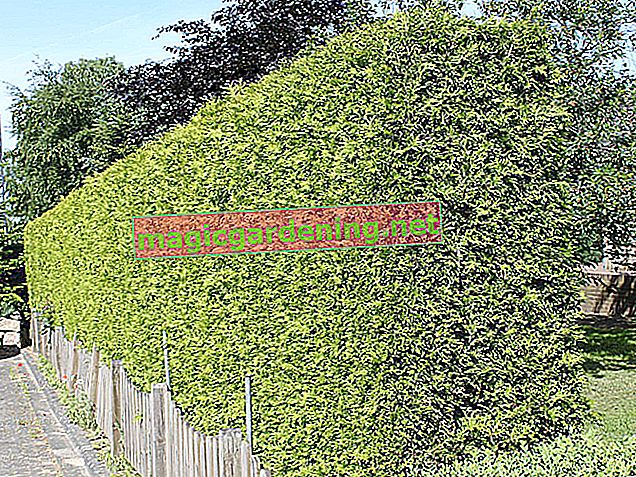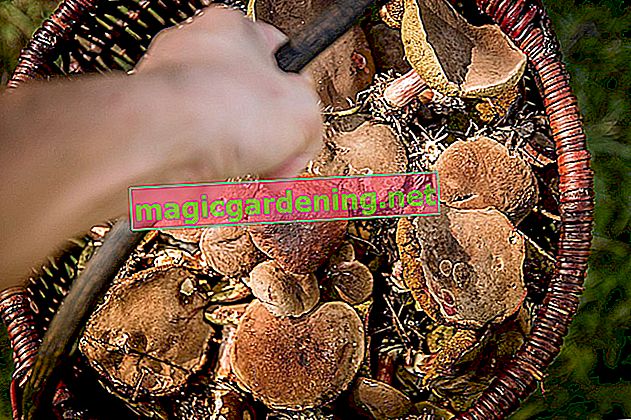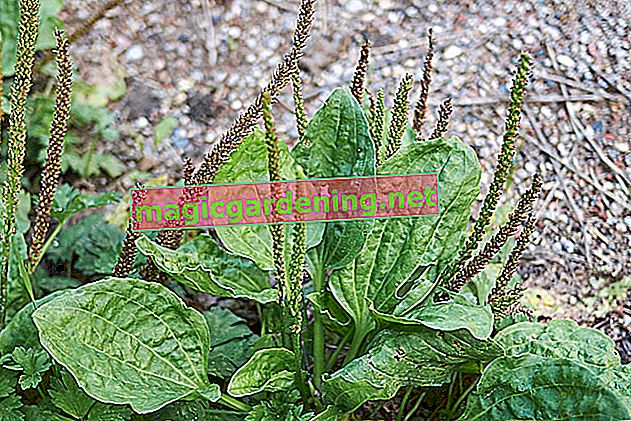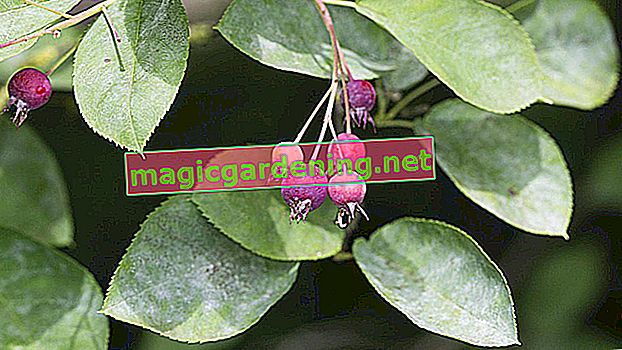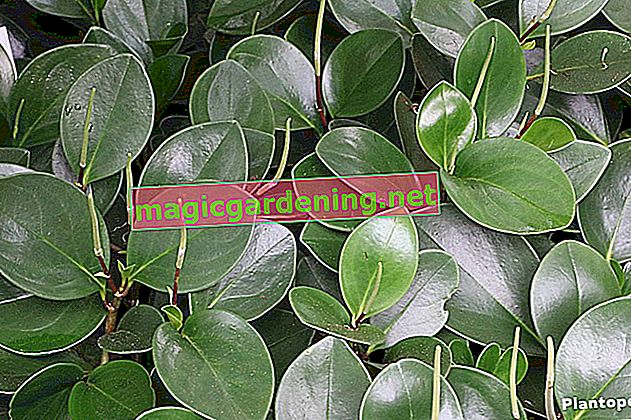
Origin and Distribution
The dwarf pepper belongs to a large family of around 1500 different species and, from a botanical point of view, is closely related to the well-known kitchen spice. The pretty decorative foliage plant has its home in the South American Amazon region, where it is preferred to be found under the warm shade of the large jungle trees. Various varieties can also be found in other tropical to subtropical areas of Central and South America. What they all have in common is the need for a year-round warm culture, which is why the plant is only suitable for indoor culture, but not for the garden.
also read
- Dwarf pepper is non-toxic and suitable for pets
- Lenten roses: types and care
- St. John's wort in the garden: types, location, care
Appearance and stature
The compact growing perennial forms a dense eyrie. As the name suggests, dwarf pepper is not particularly large and only reaches heights of between 15 and 30 centimeters. The thick, fleshy leaves are very different in shape and color, depending on the type and variety, and can range from plain fresh green to variegated yellow or white-green. With different varieties of dwarf pepper you can create small collections on the windowsill.
leaves
Peperomias - which are sometimes also referred to as watermelon plants, rat tails or crocodile tears - are pronounced decorative leaf plants that are also wonderfully suitable for smaller window sills. The five to eight centimeters long and elliptically shaped leaves are fleshy and have a leathery texture. The leaf blade shines in all varieties, regardless of the varied coloring of the leaves.
Blossoms and flowering period
In contrast to the attractive foliage of the dwarf pepper, the bulb-shaped flower spikes are very small and hardly noticeable. The light green to yellowish-white florets usually appear between April and December.
fruit
Small, inconspicuous berries also develop from the delicate flowers.
Toxicity
Dwarf pepper is not poisonous, but instead is very suitable for planting terrariums. Reptiles love to eat the juicy leaves.
Which location is suitable?
While peperomies don't need a lot of care, they do need a suitable location. The plants should be placed on a window sill in a bright, but not directly sunny place, whereby varieties with colored leaves generally need more light than the single-colored ones. However, avoid direct sunlight in any case, as this leads to leaf burns and thus unsightly brown spots. Since the ornamental foliage plant cannot tolerate temperature fluctuations, drafts should also be avoided. The optimal room temperature is around 20 degrees Celsius all year round, although it should never be colder than 18 degrees Celsius.
The dwarf pepper can also spend the summer months in a light, but shady spot on the balcony or terrace. Be sure to bring the plant in as soon as it is permanently cooler than 18 degrees Celsius, winds strongly or storms or rains frequently.
Substrate
Plant the dwarf pepper in commercially available green plant or container plant soil, which should not be based on peat for environmental reasons. Compost soil is a bit more expensive, but the plants thrive in it much better. For better permeability, add expanded clay (€ 17.50 at Amazon *) or other inorganic materials to the substrate; good pot drainage is also essential to avoid waterlogging. To do this, fill a layer of gravel or expanded clay a few centimeters thick on the bottom of the pot.
Planting and repotting
Peperomias are the right choice when there is little space for indoor plants in the apartment. The shallow roots develop only a few roots and therefore make do with small planters and hanging baskets. Furthermore, several copies can be put in groups in a larger pot. And this is how it is planted:
- Fill the drainage layer into the pot.
- Then fill the plant substrate.
- Press a planting hole into it with your fingers.
- Put the dwarf pepper in it.
- Lightly press the plant into place.
- Lightly pour them on.
- The substrate should be moist, but not wet.
Repot the plants in fresh substrate once a year in early summer, a larger planter is not always necessary. Do not choose the plant pot too big, otherwise the small plants will look very lost in it. If the peperomies are fully grown and no longer get any bigger, it is sufficient to simply change the top layer of soil.
Pour dwarf pepper
Ideally, the dwarf pepper should always be slightly moist, but never wet. Do a finger test before each watering: If the surface of the soil in the pot feels dry and crumbly, it is time for another swing out of the watering can. Use well-stale tap water or collected rainwater for this, as dwarf pepper, like so many tropical plants, does not tolerate lime. Excess water from the planter or saucer should be removed immediately.
Fertilize dwarf pepper properly
Since dwarf pepper needs only a few nutrients (and is repotted annually in fresh substrate anyway), fertilize the plants in low doses. It is best to use a liquid fertilizer for indoor or green plants, which you administer together with the irrigation water. During the main vegetation period between April and October, fertilization is carried out every two weeks, but only every four weeks during the cold season.
Cut dwarf pepper correctly
Pruning is neither necessary nor useful, especially since the dwarf pepper can grow to its pleasant shape without the aid of scissors. You should only carefully pluck dry or withered leaves with your fingers.
Multiply dwarf pepper
The easy-care pepper plants can be easily propagated yourself with head or leaf cuttings. These are best cut in spring or during the summer months. And this is how the cuttings are propagated:
- Cut off head cuttings about ten centimeters long.
- Make the cut just below a leaf knot.
- This is where the roots grow later.
- Remove all leaves at the bottom of the shoot.
- Plant the cuttings one at a time in small pots.
- Fill this with a mixture of potting soil and gravel / expanded clay.
- Moisten the substrate.
- Place a cut PET bottle over the cutting.
- Alternatively, an overstretched cling film also works.
- Place the pots in a bright, sunny and warm location.
- Ventilate daily.
- Keep the substrate only slightly moist.
Most of the cuttings have fully rooted within two to three months and can be repotted if necessary.
Overwinter
Special measures for wintering are not necessary, as peperomies should be kept warm all year round. However, due to the lower amount of light during winter, you should water and fertilize the plants less often.
Diseases and pests
The dwarf pepper reacts very sensitively to excessive moisture or even waterlogging. This promotes root rot and also causes leaves and shoots to rot. Otherwise, the pests typical of a room culture can be found again and again, but these can be combated well. Regular checks for spider mites, mealybugs, mealybugs and thrips as well as prompt measures in the event of an infestation are therefore useful. Diseased plants should also be separated for the duration of the treatment in order to prevent them from jumping over to healthy ones.
Tips
Since the decorative pepper should be in a shady place anyway, you can also cultivate it in darker corners of the room. Plant lights installed here provide the required brightness. The same applies to planting in terrariums. Combine different looking varieties together in a bowl or other flat planter.
Species and varieties
Dwarf pepper comes in around 1500 (some sources also give up to 1700) different types, many of which can be cultivated in the living room. The numerous varieties are very diverse in their leaf shapes and colors. There are peperomies not only with green or colored (variegated) leaves, but also with reddish-brown, red, silvery or striped foliage. The leaves can be thick, fleshy, thin, smooth or wrinkled. In addition to the upright species, there are also creeping and hanging forms that are very suitable for a traffic light culture.
Peperomia argyreia
This species is also called the watermelon plant and comes from northern South America, where it is mainly found in the forests of Bolivia, Brazil, Ecuador and Venezuela. The thick, fleshy, broad and tapering leaves are striking because of their attractive silvery-green stripes. The red petioles of the species up to 40 centimeters high stand in an interesting contrast.
Peperomia caperata
The species native to Brazil is also known as wrinkled or emerald green peperomy. Their heart-shaped leaves are strongly wavy and a solid dark green color. The leaf stalks are also reddish in color. This ornamental pepper remains quite small with a height of only about 25 centimeters.
Peperomia fraseri
The species native to Ecuador and Peru has the German name Efeublättriger Zierpfeffer. It forms numerous small, rounded leaves with a reddish color on the underside. The slightly fragrant flower spikes, up to 65 high, are particularly attractive.
Peperomia griseoargentea (Syn.Peperomia hederifolia)
The species, which only grows to about 15 centimeters, has pretty, silvery shimmering foliage and is delightful with its flower spikes that grow up to 25 centimeters high.
Peperomia obtusifoli
The fleshy decorative pepper is available in numerous varieties and usually reaches a height of up to 35 centimeters. For example:
- 'Alba': newly emerging leaves are yellow in color
- 'Alba-marginata': light-colored leaves with a silvery border
- 'Green': solid, fresh green foliage
- 'Raindrop': solid green foliage
- 'USA': pretty variant with yellow-green foliage
- 'Variegata': yellow-green variegated foliage


